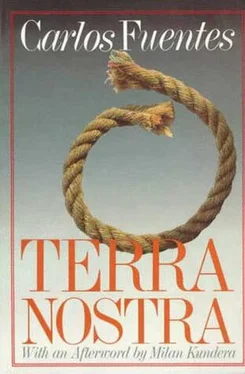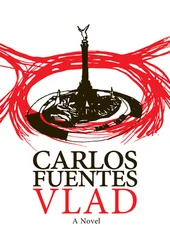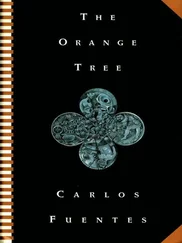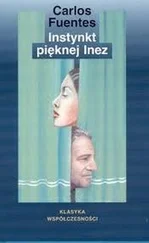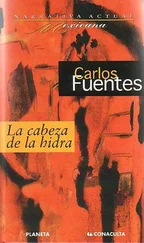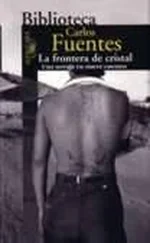Carlos Fuentes - Terra Nostra
Здесь есть возможность читать онлайн «Carlos Fuentes - Terra Nostra» весь текст электронной книги совершенно бесплатно (целиком полную версию без сокращений). В некоторых случаях можно слушать аудио, скачать через торрент в формате fb2 и присутствует краткое содержание. Год выпуска: 1987, Издательство: Farrar, Straus and Giroux, Жанр: Современная проза, на английском языке. Описание произведения, (предисловие) а так же отзывы посетителей доступны на портале библиотеки ЛибКат.
- Название:Terra Nostra
- Автор:
- Издательство:Farrar, Straus and Giroux
- Жанр:
- Год:1987
- ISBN:нет данных
- Рейтинг книги:3 / 5. Голосов: 1
-
Избранное:Добавить в избранное
- Отзывы:
-
Ваша оценка:
- 60
- 1
- 2
- 3
- 4
- 5
Terra Nostra: краткое содержание, описание и аннотация
Предлагаем к чтению аннотацию, описание, краткое содержание или предисловие (зависит от того, что написал сам автор книги «Terra Nostra»). Если вы не нашли необходимую информацию о книге — напишите в комментариях, мы постараемся отыскать её.
Terra Nostra — читать онлайн бесплатно полную книгу (весь текст) целиком
Ниже представлен текст книги, разбитый по страницам. Система сохранения места последней прочитанной страницы, позволяет с удобством читать онлайн бесплатно книгу «Terra Nostra», без необходимости каждый раз заново искать на чём Вы остановились. Поставьте закладку, и сможете в любой момент перейти на страницу, на которой закончили чтение.
Интервал:
Закладка:
And that night in his tower the Chaldean, Brother Toribio, said to the painter, Brother Julián: “Brother, if you believed in them, I would tell you that Devils are wandering around my tower, for henbane and belladonna, betel and hellebore have disappeared from the stores in my apothecary; it must be thieves.”
GAZES
El Señor summoned his court, making use of Guzmán, who in turn availed himself of his faithful and anonymous band of huntsmen; he summoned all and all responded to the summons to gather in the subterranean chapel. Only La Señora remained in her bedchamber, intent upon instilling life in the mummy fashioned from bits and pieces of royal cadavers, exhausting the formulas of diabolic invocation, and in her turn counting on no one and nothing except the assistance of the uncouth serving girls, Azucena and Lolilla, and the obscure words of the blind Aragonese flautist. In contrast, many were gathered in El Señor’s chapel: hidden behind the tall latticework whose shadows turned their faces and habits into a pattern of white honeycombs were Madre Milagros, the nun Angustias, Sister Inés, and all the Andalusian novitiates; the fat Bishop was there, reclining on a litter borne by mendicant priests, perspiring, wiping his brow with a lace handkerchief and followed closely by an Augustinian monk with cadaverous features; the Sevillian usurer, wearing his marten-skin cap, was quick to prostrate himself before El Señor and thank him for the title of Comendador that afforded him the opportunity to enjoy May in December and add honor to riches; and the astrologer Brother Toribio had been summoned to read the signs of this event through which El Señor hoped to decipher all past enigmas and then place them in the horoscope with the assistance of the walleyed, red-haired priest.
And Guzmán gazed upon it all, knowing that once the court had been assembled his huntsmen would scatter across the plain and communicate to the workmen on the site — Nuño, Jerónimo, Martín, Catilinón — the false, although entirely probable news: the Mad Lady had had her way; our Señor has proclaimed the Idiot and the flatulent dwarf his heir and heiress; it is this obtuse and deformed pair that soon will govern you, for the degenerate, mystic, and necrophilic El Señor, his energies lost forever, his love for the hunt, for warfare, for women — the sap of power — forever forgotten, will soon abandon his mortal shell; look what awaits you if you do not rebel now: generation after generation of idiot monarchs, bleeders prone to the French malady who like vampires will derive from your eternally robust but eternally servile blood what little strength they can possess. Do you dream of restoring your ancient rights as free men? do you dream of a justice that will defend you against the power of the Señores? do you dream of a statute that will free you from both the caprice of the castle and the usury of the cities? do you dream of a contract that will permit you to give and receive with equity? Then look at El Señor, and if you think his reign has been harsh, imagine what that of the dwarf and the Idiot will be, and of the monstrous offspring such a pair will engender, and you will know that your lamentations can only increase and be prolonged endlessly unto the consummation of the centuries.
And the painter-priest Julián gazed at everything through different eyes, lost among the multitude of monks, alguaciles, stewards, councilmen, duennas, officials, majordomos, and comptrollers called before El Señor. For him this first gathering of the members of the court in the private chapel was like the inauguration, the unveiling, of the great painting that Julián, with the assistance of the Chronicler, had convinced El Señor had come from Orvieto, the fatherland of a few austere, melancholy, and energetic painters, but which in truth the priest, painter of miniatures, inflamed with rebellious ambition, had executed with patience and stealth in the deepest dungeon of the palace, fearing that his work’s novelty, the audacious rupture from the symmetrical aesthetic demanded by orthodoxy — so that the works of man might coincide with revealed truth — would be so obvious that it would be Julián’s destiny to join the Chronicler in cleansing himself of the guilt of the worst of all rebellions: not Cain’s: fratricide; but Lucifer’s: deicide.
This is what he feared, although secretly he was offended that no one paid any attention to the painting, no one scrutinized it, or even anathematized it. Was its message so veiled? So diaphanous and terse and hidden was its criticism (or perhaps its decisiveness, its judgments — thought Julián — if one considered the Greek origin of a word whose destiny he would not dare prognosticate) that to discover it would demand an investment of attention and time that none of those here present was prepared to make … or lose? Would the slow contamination, the inevitable corrosive power of the figures there arranged, arranged thus in order to shatter the sacred order of Christian painting, take so long to have effect? A central and uncontaminated deity surrounded by two-dimensional, unrelieved space, immune, too, to all temporal condition.
“That is the law.”
Brother Julián was tempted to open a path through the indifferent crowd, the throng of palace sycophants, to reach the altar, approach the painting, and trace his signature with thick brushstrokes in one corner of the canvas. He was tempted, but he resisted; not because of physical fear, but rather, moral suspicion. He was restrained by a vague reflection, the residue of his conversation in the tower with the astrologer: if the universe were infinite it would have no center, not the sun, not the earth, not the powers upon the earth, and certainly not an individual person and his pretentious scrawl, Julianus, Frater et Pictor, Fecit, and furthermore his spirit might seep away through that signature; let there be no center to in infinite universe which lacks a center. Julián stood apart, airily spiritual, illuminated, because of its paradoxical nearness and immobility, by a sudden communion with everything that was outside himself or his body or his consciousness; he himself posed the opposite response to his own argument: then if there is no center, everything is central and thus, as he gazed at it, he could understand the painting he had created and say to himself, confused, but assured:
“No one put his signature to the towers of Milan or Compostela, the abbeys of Apulia or the Dordogne, the stained glass or domes of our Christian kingdom; and I must do honor to the anonymity of those artists and speak with them the new truths, never sacrificing the ancient virtues; paint an Italian piazza with profound perspective flowing like the time in which men are born, in which they mature and perish, and flowing like the unrestricted space in which men are fulfilling the designs of God: here are houses, doors, stones, trees, real men, not the unrelieved space of the revelation or the hourless time of the original fiat, but space that is place, and time that is the scar of creation. Blind men: can you not see my Christ without a halo, facing a corner of the painting that is thus prolonged beyond its limits to invent new space, no longer the space of oneness, the invisible and invariable space of the revelation, but the many and different places of a constantly maintained and renewed creation? Poor blind creatures: do you not see that my Christ occupies a corner of specific but in no way finite space in my painting, and that in that precise, ex-centric positioning, Christ is eternally his own center in relation to the dimensional circle I have drawn, and that the naked men are standing in a real Italian piazza, and thus instead of illustrating a theme they are protagonists of an event, and that their center does not coincide with the center Christ displaces, do you not see that what is important is not a central or ex-centric placement which ceases to exist if the center, being everywhere, is nowhere, but that what is important is the relationship between two distinct essences, divine and human, and that the bridge between the two is their exchange of gazes? Blind, blind: I paint so that I may see, I see so that I may paint, I gaze at what I paint and what I paint, when painted, gazes at me and finally gazes at you who gaze at me when you gaze upon my painting. Yes, Brother Toribio, only what is circular is eternal and only the eternal is circular, but within that eternal circularity there is room for all the accidents and variations of the freedom that is not eternal but instantaneous and fleeting: my Christ elects to gaze, freely, instantaneously, and fleetingly, at the men’s bodies, whereas the men gaze at the world, the space and the time surrounding them, and it is this world that gazes at Christ and thus, as everything is related through the gazes, everything divine is human, and everything human, divine, and the true halo forming an aureole above them all is the pale and transparent light — no one’s and everyone’s — that bathes the space of the piazza. Blind men!
Читать дальшеИнтервал:
Закладка:
Похожие книги на «Terra Nostra»
Представляем Вашему вниманию похожие книги на «Terra Nostra» списком для выбора. Мы отобрали схожую по названию и смыслу литературу в надежде предоставить читателям больше вариантов отыскать новые, интересные, ещё непрочитанные произведения.
Обсуждение, отзывы о книге «Terra Nostra» и просто собственные мнения читателей. Оставьте ваши комментарии, напишите, что Вы думаете о произведении, его смысле или главных героях. Укажите что конкретно понравилось, а что нет, и почему Вы так считаете.
